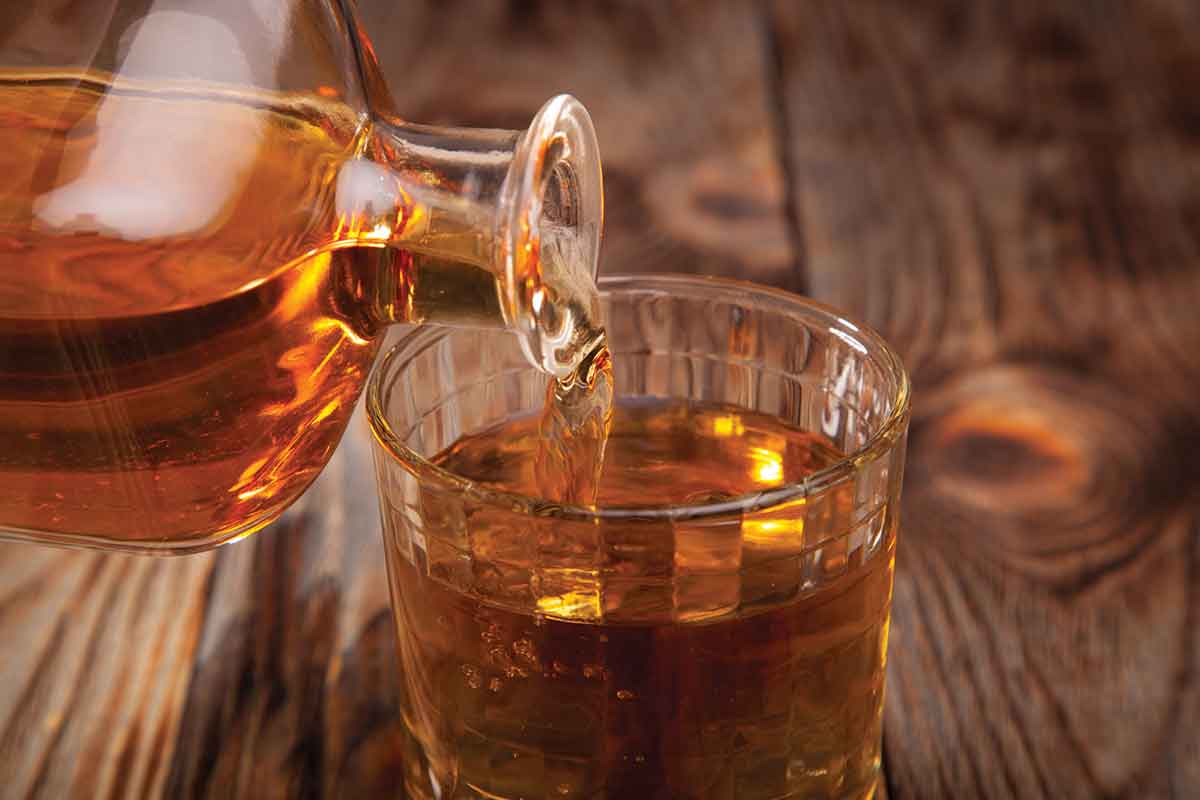Two things are true for almost all people: we feel rewarded when we complete a task or successfully finish a DIY project, and we get bored with the same thing over and over again. To help on both fronts, you may decide it’s worthwhile to try your hand at home whiskey experiments. Fear not, you don’t need lab coats and Bunsen burners to pull it off either (although it’d be totally cool if you did use them).
Become A Blender
Perhaps the easiest place to start is by creating your own blend. Just combine a few of your favorites to create a new whiskey you can call your own. For example, you can mix strong but opposing characteristics together—say heavy peat and heavy sherry—in an attempt to balance them. Or you can blend entirely different styles of whiskey with one another, or just let your imagination run wild, really.
“The goal of blending is to express your creativity, while finding nuance and balance,” says Joe Beatrice. As founder of Barrell Craft Spirits, Beatrice knows a few things on the subject, and has specialized in the art and skill of creating standout blended products. “Mastering the craft involves lots of experimentation and patience,” he says.
Here’s his step-by-step suggestions for making your first ever at-home whiskey blend:
• Start with 2-3 ounces of a premium base–aka your go-to whiskey.
• Next, add a few drops of a second whiskey that offers a contrast to the base and taste. Most of us have smaller amounts of other whiskeys in our liquor cabinets and this is a perfect use for them.
• If you’re feeling adventurous, add a drop of a premium port or sherry to get a feel for what a barrel finish may taste like. Barrell always puts its whiskey in the barrel to finish, but during the testing process the brand soaks a wood chip from a barrel in the experimental finish to see what it may taste like.
• Then, let your blend commingle for at least an hour so the whiskeys can marry.

Keep Testing and Tasting
When you nose and then sample your new creation, take notice of how the blend has evolved. It’s that easy to get started. Of course, the fun is really in tweaking and playing with that blend to create different blended whiskey experiments. You’re searching for that magical voila moment when a good hodgepodge of whiskeys suddenly explodes into spectacular flavor. When that happens, hopefully you keep careful notes of your ingredients and their ratios so you can recreate it.
On the other hand, if you need to course correct, Beatrice has a few helpful tips. “If it still needs a little work, consider either adding a few drops of a third whiskey or a younger whiskey to neutralize some of the flavor,” he says. “Then let the blend rest, and try it again. Remember that this is an ongoing labor of love with lots of trial and error.”
At Barrell, one of the popular whiskeys is the Infinite Barrel Project, and you can follow along the same line by maintaining a “living” infinity bottle. Keep your blend in an airtight container—a fancy decanter will impress your friends. But any empty bottle off the shelf will suffice. Continue occasionally adding new whiskeys with different flavors and qualities. Never allow the blend to be emptied. This way you always retain some of the original magic it’s obtained since it was birthed into the world via your very hands.
Get Creative and Have Fun
With your first whiskey experiments out of the way, you may be itching for more fun ways to play with whiskey at home. We checked in with Aaron Goldfarb for some helpful guidance. After all, as the author of Hacking Whiskey, he is literally the man who wrote the book on the matter.
“I think the two best projects from my book to get started with are the bacon fat-washed bourbon and the cereal milk clarified punch,” Goldfarb said. “Why? Because they both necessitate having food left over for other members of the household — especially the underage, if you have kids — to eat. Both also seem daunting but are very easy to pull off as long as you have time and some space in your kitchen to operate.”
The Benton’s Bacon Fat-Infused Four Roses Bourbon is a recipe sourced from Don Lee of PDT in New York. A fat-washing process essentially infuses a spirit with flavor. After the infusion, you then freeze and strain out the resultant solids. This process combines two of our very favorite things, bourbon and bacon.
For the cereal milk bourbon punch, he follows bartender Alex Chien’s process for recreating one of our fondest childhood memories: cereal milk. Of course, we keep our adult privileges intact with plenty of bourbon. Goldfarb then uses that base ingredient and soda water in the creation of the Saturday Morning Cartoons cocktail. Pick up a copy of his book for full details on both projects along with dozens of Goldfarb’s other recommendations.
With some basic tips and skills, there’s nothing holding you back. Go ahead and get your hands dirty and have fun with your whiskey experiments.
Ready to find the perfect bottle for your whiskey experiments?
With Distiller, you’ll always know what’s in the bottle before you spend a cent. Rate, Review, and Discover spirits. Head on over to Distiller, or download the app for iOS and Android today!
Want to enjoy Distiller ad-free? Join Distiller Pro today to support the Distiller platform and keep ads off of your screen.

